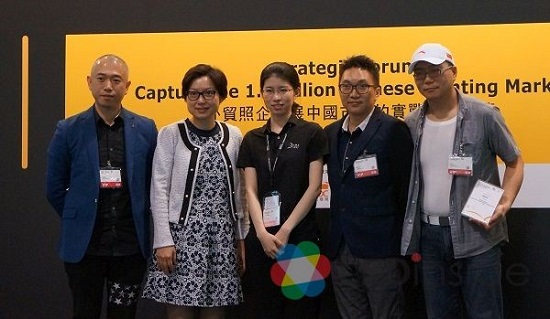The Hong Kong International Lighting Fair not only shows new trends in the lighting industry, but also provides a platform for buyers and vendors to build partnership. In this fair, experts in China’s lighting industry talked about how to explore domestic Chinese market, while foreign companies from the US, Spain and Australia shared their market preferences and purchasing experiences.
Li Zhipeng, the general manager of MERCANVEE Lighting, pointed out that many export-oriented lighting companies in China operate in the modes of agency, OEM or manufacturing. The advantages of this type of enterprise are relatively simple product lines, competitive individual products, and good grasp of different markets. However, if they want to explore the Chinese market, building a brand is a must. However, these export-oriented lighting companies do not have sufficient knowledge of the Chinese market and lack experiences in market operation, moreover, their product line is simple with limited space for development. In addition, branded vendors are mainly faced with retailing market, where the delivery period is relatively short, so vendors must be more flexible in production.
In order to decide the brand positioning, enterprises must evaluate their own advantages in products, market trends, consumer preferences, and competitors, so as to find the entry and promotion methods in the highly saturated market.
In terms of product design, Lu Jiayi, deputy general manager of Guangzhou Dengguangshe Lighting Design Co., Ltd., stressed that the lighting market in China has developed rapidly, and China's manufacturing capabilities are recognized all over the world. However, lighting products are mainly based on fixed models, lacking in design and aesthetics. In addition, manufacturers attach too much importance to data (e.g. the product's color temperature should be 3000K, RA should be 90-95), but in fact different installation scenarios should be considered, and the higher numbers are not always the better. He suggested that lighting companies should consider both decorative products and functional products, making decorative products more functional and functional ones more decorative. At the same time, they must expand product lines to meet different situations and lighting requirements.
Zhang Hao, senior product manager of Beijing Elicht Technology, an online training platform for lighting companies, said that sales channels and services need to be considered in addition to brands and products. The establishment of the sales channels can solve the dilemma for customers who want to buy the products but do not know where to buy. A comprehensive service team and expanding regional services can also add value to the brand.
Opportunities in mature markets
In mature markets such as the United States and Australia, most lighting brands and sales channels commission Chinese OEMs for manufacturing. Their requirements are still energy efficiency, high performance-price ratio, and certification for products.
 |
|
The Hong Kong Trade Development Council organized buyer forum, where representatives of lighting brands from the United States, Spain and Australia were invited to introduce business opportunities in mature markets. (Source: HKTDC)
|
Ronald Stone, CEO of Stone Lighting, pointed out that the trend in the US market is roughly the same as in Hong Kong and most of the markets worldwide. The trend is, the more energy-saving, the better. Some electric power companies in the U.S. are not planning to invest in new facilities, so they encourage people to purchase energy-saving lamps such as LED, and also subsidize the users of LED. This has also led to a wave of LED lighting. He also reminded that if the products want to enter the U.S. market, they must comply with the relevant regulations for LED lamps in the California Energy Code, Title 24 of California Code of Regulations issued by California Energy Commission. Although the current legislation is limited to California, other states may follow suit in the future.
Jordi Minano, the CEO of Mimax Lighting from Spain, mentioned that LED are adopted in almost the whole decorative lighting market in Europe. The market also welcomes functions of brightness and color adjustment, as well as high performance-cost ratio. As for regulations, Europe is less strict than the United States, and products can only meet CE certification.
As for the Australian market, Anthony Anton, the general manager of Golights, an Australian online shopping site of lighting products, said that LED downlights, stand lights, table lamps and filament lamps are now popular in the local market. In terms of design, Australian consumers prefer the Nordic minimalist style, such as black and white, and materials of wood or acrylic. In addition, the most important features are energy-saving, high performance cost ratio, and SAA certification.













